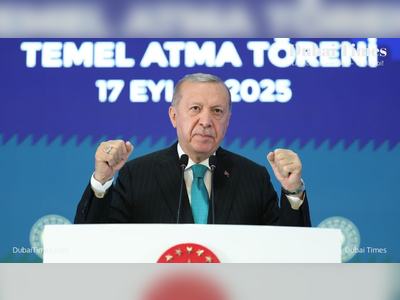
Emirates Airlines Reports Major Passenger Growth and Fleet Expansion
The airline transported 53.7 million passengers in the fiscal year 2024-2025, with significant contributions from its Airbus A380 and Boeing 777 fleets.
Emirates Airlines has announced that its fleet of Airbus A380 aircraft was responsible for transporting approximately 44% of its total passenger count, which reached 53.7 million in the fiscal year 2024-2025. This translates to around 23.6 million passengers flown on the A380, connecting them to 51 global destinations with an impressive seat occupancy rate of 80%.
The Boeing 777, which continues to play a pivotal role in the airline’s operations, maintained Emirates’ position as the largest operator of Boeing 777 aircraft globally.
The Boeing 777 contributed to 48% of the passenger capacity (available seats per kilometer) while carrying nearly 56% of the total passengers, equating to around 30 million individuals in the last fiscal year.
In its efforts to enhance the travel experience, Emirates has introduced its refreshed Boeing 777 aircraft to 17 destinations across its network.
As of the end of the fiscal year 2024-2025, the airline's new Airbus A350 aircraft commenced services to six points on its global network.
Since their introduction in January 2025 through the end of March, these aircraft, which feature economy, premium economy, and business class seating, have accommodated 184,000 passengers.
Emirates continues to operate a modern fleet with an average age of 10.7 years, significantly below the industry average of 14.8 years as of 2024. The airline's current fleet comprises 140 Boeing 777s, 116 Airbus A380s, and four Airbus A350s.
To capitalize on Dubai's growing status as a preferred global logistics hub, Emirates has placed orders for 10 Boeing 777 freighters, expected to be delivered by the end of 2026.
As of the conclusion of the fiscal year, Emirates' order backlog stood at 314 aircraft, including 61 Airbus A350-900s, 205 Boeing 777-Xs, 35 Boeing 787s, and 13 Boeing 777 freighters.
The airline noted that in fiscal years 2024 and 2025, it will further expand its fleet and enhance onboard products, marking a new era of growth and customer experience.
The previous fiscal year was significant for the airline with the addition of its first Airbus A350, designated A6-EXA, the first new aircraft to join its fleet in 16 years.
By March 31, Emirates had received four A350s and is on schedule to receive 61 more in the coming years.
The A350 entered commercial service on January 3 with routes including Edinburgh, followed by Bahrain, Kuwait, Mumbai, Ahmedabad, and Colombo.
Despite ongoing delays in new aircraft deliveries, Emirates is implementing a program to refurbish 219 existing aircraft with an investment exceeding $5 billion.
The airline’s premium economy class has surpassed expectations, transporting 623,000 passengers across 37 destinations during the fiscal year 2024-2025.
The Boeing 777, which continues to play a pivotal role in the airline’s operations, maintained Emirates’ position as the largest operator of Boeing 777 aircraft globally.
The Boeing 777 contributed to 48% of the passenger capacity (available seats per kilometer) while carrying nearly 56% of the total passengers, equating to around 30 million individuals in the last fiscal year.
In its efforts to enhance the travel experience, Emirates has introduced its refreshed Boeing 777 aircraft to 17 destinations across its network.
As of the end of the fiscal year 2024-2025, the airline's new Airbus A350 aircraft commenced services to six points on its global network.
Since their introduction in January 2025 through the end of March, these aircraft, which feature economy, premium economy, and business class seating, have accommodated 184,000 passengers.
Emirates continues to operate a modern fleet with an average age of 10.7 years, significantly below the industry average of 14.8 years as of 2024. The airline's current fleet comprises 140 Boeing 777s, 116 Airbus A380s, and four Airbus A350s.
To capitalize on Dubai's growing status as a preferred global logistics hub, Emirates has placed orders for 10 Boeing 777 freighters, expected to be delivered by the end of 2026.
As of the conclusion of the fiscal year, Emirates' order backlog stood at 314 aircraft, including 61 Airbus A350-900s, 205 Boeing 777-Xs, 35 Boeing 787s, and 13 Boeing 777 freighters.
The airline noted that in fiscal years 2024 and 2025, it will further expand its fleet and enhance onboard products, marking a new era of growth and customer experience.
The previous fiscal year was significant for the airline with the addition of its first Airbus A350, designated A6-EXA, the first new aircraft to join its fleet in 16 years.
By March 31, Emirates had received four A350s and is on schedule to receive 61 more in the coming years.
The A350 entered commercial service on January 3 with routes including Edinburgh, followed by Bahrain, Kuwait, Mumbai, Ahmedabad, and Colombo.
Despite ongoing delays in new aircraft deliveries, Emirates is implementing a program to refurbish 219 existing aircraft with an investment exceeding $5 billion.
The airline’s premium economy class has surpassed expectations, transporting 623,000 passengers across 37 destinations during the fiscal year 2024-2025.











